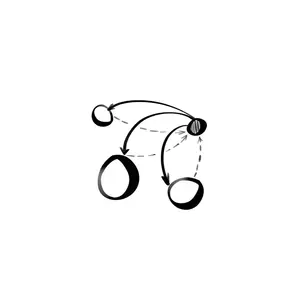Stakeholder Interviews

Stakeholder Interviews are conducted by practitioners with key stakeholders in their ecosystem, such as decision makers, team members, peers, or customers both within and outside an organization. The interviews allow you to step into the shoes of the interviewees and see their role through their eyes.
Goal
Stakeholder Interviews can be used in all phases of a process, usually during the preparation of a project. They serve to:
- enhance clarity about how your work matters from the viewpoint of your stakeholders.
- clarify how your stakeholders assess the value you create for them.
- identify barriers and roadblocks that need to be removed.
- develop better and deeper personal relationships with key stakeholders.
Instructions
Principles
- Establish a container with the interviewee to create transparency and trust about the purpose and the process of the interview.
- Suspend your voice of judgment (VOJ) to see the situation through the eyes of your interviewee. What matters at this point is not whether you agree with what your interviewee is telling you. What matters now is that you see the situation through that person’s eyes.
- Access your ignorance (access your open mind): As the conversation unfolds, pay attention to and trust the questions that occur to you. Don’t be afraid to ask simple questions or questions you think may reveal a lack of some basic knowledge on your part.
- Access your appreciative listening (access your open heart): Connect to your interviewee with your mind and heart wide open. Thoroughly appreciate and enjoy the story that you hear unfolding.
- Access your listening from the future field (access your open will): Try to focus on the best possible future for your interviewee that you feel is wanting to emerge. What would that best possible future look like?
- Leverage the power of presence and silence: One of the most effective interventions by an interviewer is to be fully present with the interviewee and the current situation. Try not to interrupt a brief moment of silence. Moments of silence can be important trigger points for deepening the reflective level of a conversation. More often than not, these opportunities are lost because the interviewer feels compelled to jump in and ask the next question. Be courageous. Stay with what is happening NOW.
Process
Setup
- People: Stakeholder Interviews work best face-to-face but can also be conducted via video or phone.
- Place: Select a quiet place where the interviewee feels comfortable (even if the interview is conducted digitally).
- Time: An interview has no ideal length. It should be adjusted to the context: o 30–45 minutes for a phone interview o 30–90 minutes for a face-to-face interview o Allocate an additional 30 minutes before and after to prepare and then review.
- Materials: Use the sample questionnaire below, but feel free to adjust as necessary. Use paper and pen to take notes.
Steps
Step 1: Prepare Logistics
- Identify the stakeholders who are relevant to your current situation or challenge/opportunity.
- Define/revise questions to fit the context. Schedule interview appointments.
- Decide whether to send the questions to the interviewee in advance.
Step 2: Prepare Yourself
- Before you meet the interviewee, make time for some quiet preparation or silence.
- Take 20–30 minutes before an interview to relax and anticipate the conversation.
Step 3: Conduct the Interview
- During the interview, listen with your mind and heart wide open, take notes, and follow the principles outlined in this tool.
- Ask questions spontaneously: Feel free to deviate from your prepared questions if others occur to you. The questions are designed to serve you and your work—not the other way around.
Sample questions:
- What is your most important objective, and how can I help you realize it? (What do you need me for?)
- What criteria do you use to assess whether my contribution to your work has been successful?
- If I were able to change 2 things in my area of responsibility within the next 6 months, what 2 things would create the most value and benefit for you?
Step 4: Reflect
Right after the interview, take time to reflect on key insights; capture your thoughts in writing.
Step 5: Close the Feedback Loop
Right after each interview, send a thank-you note to your interviewee.
Resources
- Scharmer, Otto. 2007. Theory U, Second Edition, Chapter 21. Oakland, CA: Berrett-Koehler.
Attachments
- medium_Stakeholder_Interviews_8c24b9b706.webp
Background
Reproduced under CC License and with credit to the Presencing Institute.
Author
Facilitation methods and techniques reproduced in the SessionLab Library under the appropriate Creative Commons license. All methods contain attribution to the source material and are reproduced with permission.
More about author